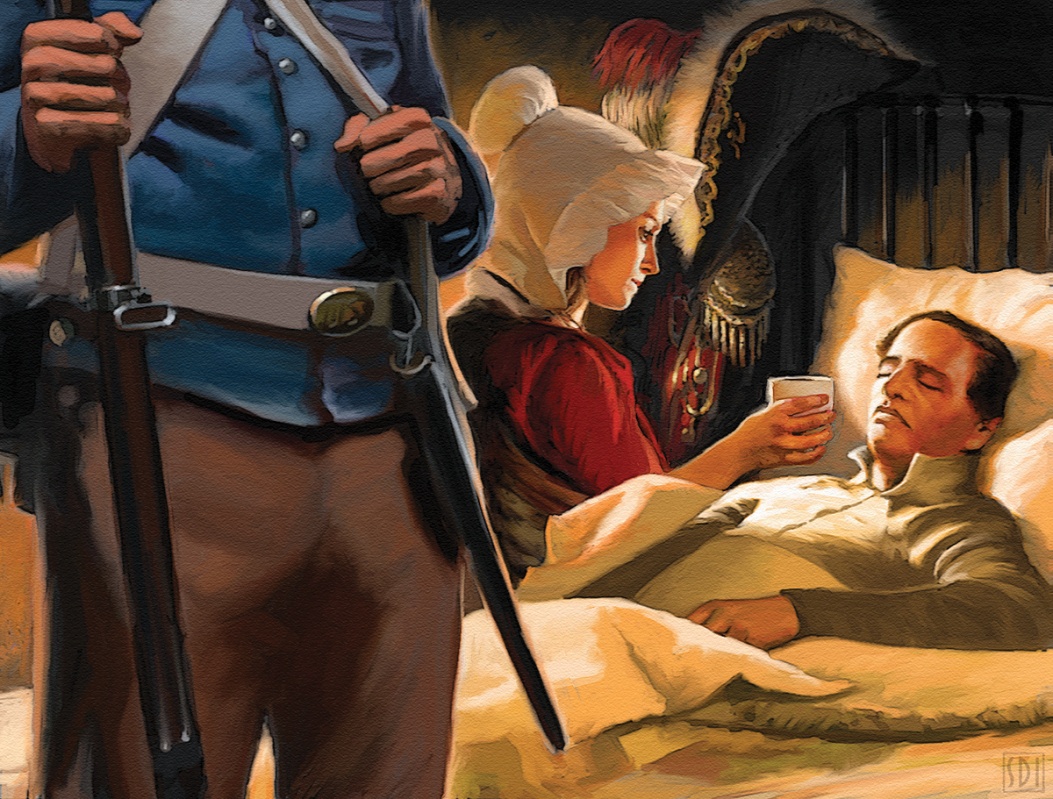Gen. Antonio López de Santa Anna, president of Mexico, dictator, tyrant, self-styled Napoleon of the West, waged a vicious war against rebellious Texians during the Texas Revolution of 1836. He ordered a take-no-prisoners policy at the Alamo and directed the execution of all Texian soldiers captured at Goliad. Glimpses into the dictator’s well-hidden personal life only surfaced occasionally.
In the aftermath of the Alamo, Santa Anna sent for Susanna Dickinson, wife of artilleryman Almeron Dickinson, and offered to take her and her 15-month-old daughter, Angelina, with him to Mexico. There, he promised they would live in the palace, and baby Angelina would be reared as his daughter with aristocratic privileges.
Susanna refused. Santa Anna sent her with a military escort toward Gonzalez and gave her a handwritten ultimatum for Sam Houston that detailed the Texian defeat at the Alamo and warned of further reprisals.
A few weeks later, on April 21, 1836, the Texian army overwhelmed Santa Anna’s forces at San Jacinto. When he perceived that defeat was inevitable, the general attempted escape but was taken prisoner. After negotiating the Treaty of Velasco, a wounded Sam Houston, aware that many loyal Texians wanted the Mexican dictator executed, decided to move him to a safe place. Houston chose Orozimbo, a secluded plantation owned by James Aeneas E. Phelps, a doctor.
From July through November of 1836, Santa Anna remained at the Phelps plantation under heavy guard. The Phelpses treated their notorious guest with respect. When a rescue attempt by a bold Mexican officer failed, Santa Anna sank into depression and drank poison, but Phelps nursed him back to health. Phelps’ wife was said to have saved the general’s life a second time by begging for his life when a Texian soldier broke in and attempted to execute him.
Santa Anna would repay the Phelpses’ kindness. During the ill-fated Mier Expedition in December 1842, their son, Orlando Phelps, was captured. When Santa Anna confirmed the young man was the son of his former host, the general ordered him released. He sent the youth into the city with an escort. The younger Phelps was then outfitted with new clothes and moved into the palace.
Santa Anna said he felt fortunate to have it in his power to return, in some measure, the kindness Phelps had shown him when he was a prisoner in Texas. Santa Anna gave the younger Phelps money and sent him back to Texas by stagecoach. For many years, the Mexican dictator regularly sent Christmas presents to the Phelps family.
In about 1900, school principal Sarah S. King of the Bowie School invited John Christopher Columbus Hill, another survivor of the Mier Expedition, to speak to her students about his experiences. King recorded the talk as Hill told his story. He had set off for Mexico at age 13 with his father and older brother as part of a volunteer Texian force to fight Mexican troops.
After their capture at Mier, the captives attempted to escape. An infuriated Santa Anna ordered every 10th prisoner shot. By then Mexican Gen. Pedro de Ampudia had taken Hill, the youngest of the captives, under his wing and sent him to Mexico City, where he reported directly to Santa Anna. Young Hill’s courage won the admiration of the general, who offered to adopt, educate and provide for the boy. Santa Anna also released Hill’s father and brother.
Santa Anna treated Hill as a son, sending him to mining school in 1850. Although he occasionally returned to Texas to visit his family, Hill spent the rest of his life designing mines and railroads in Mexico. This was one more example of how, in spite of Santa Anna’s disastrous leadership and dictatorial behavior, some reported that the Mexican general had an engaging personality.
——————–
Martha Deeringer, a member of Heart of Texas EC, lives near McGregor.


